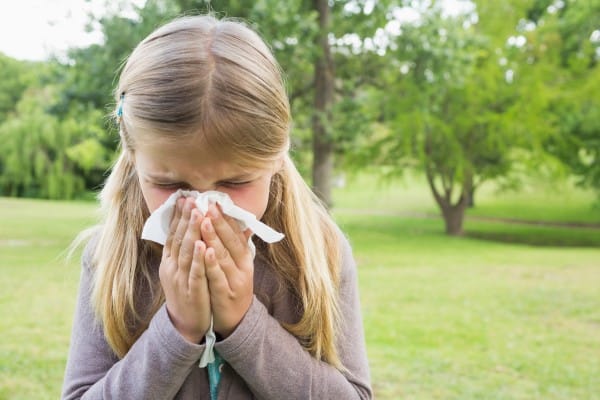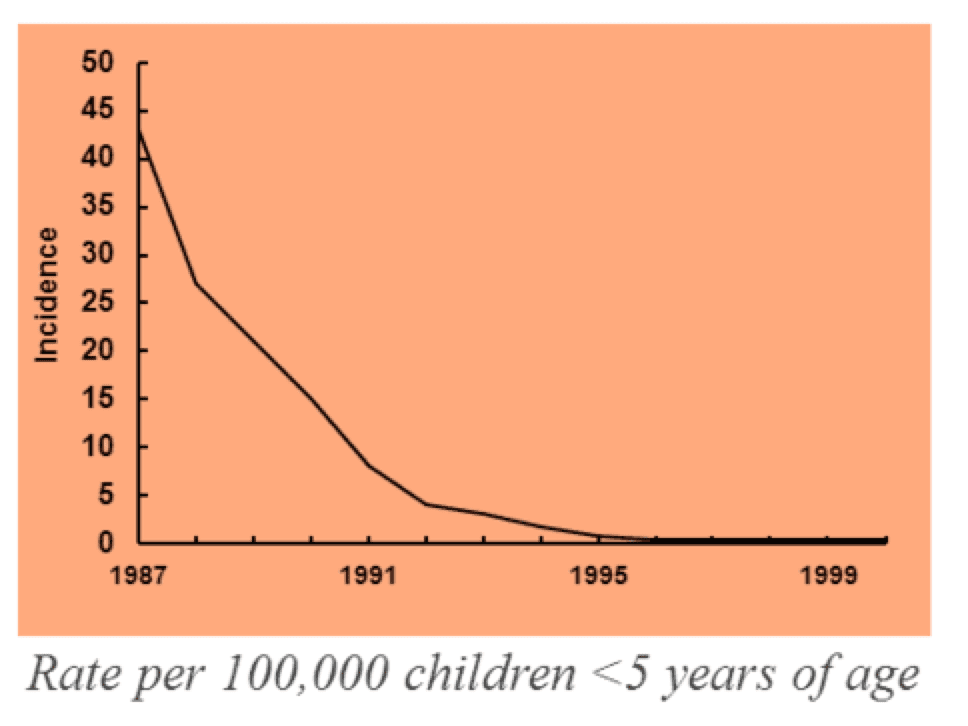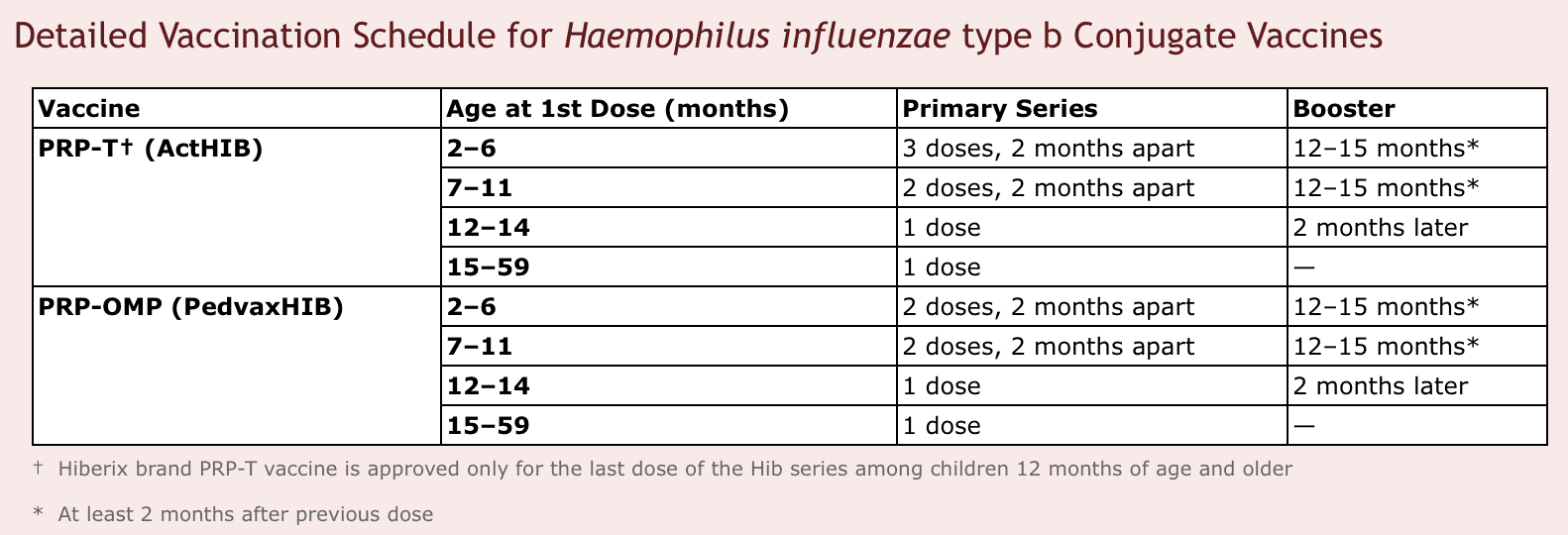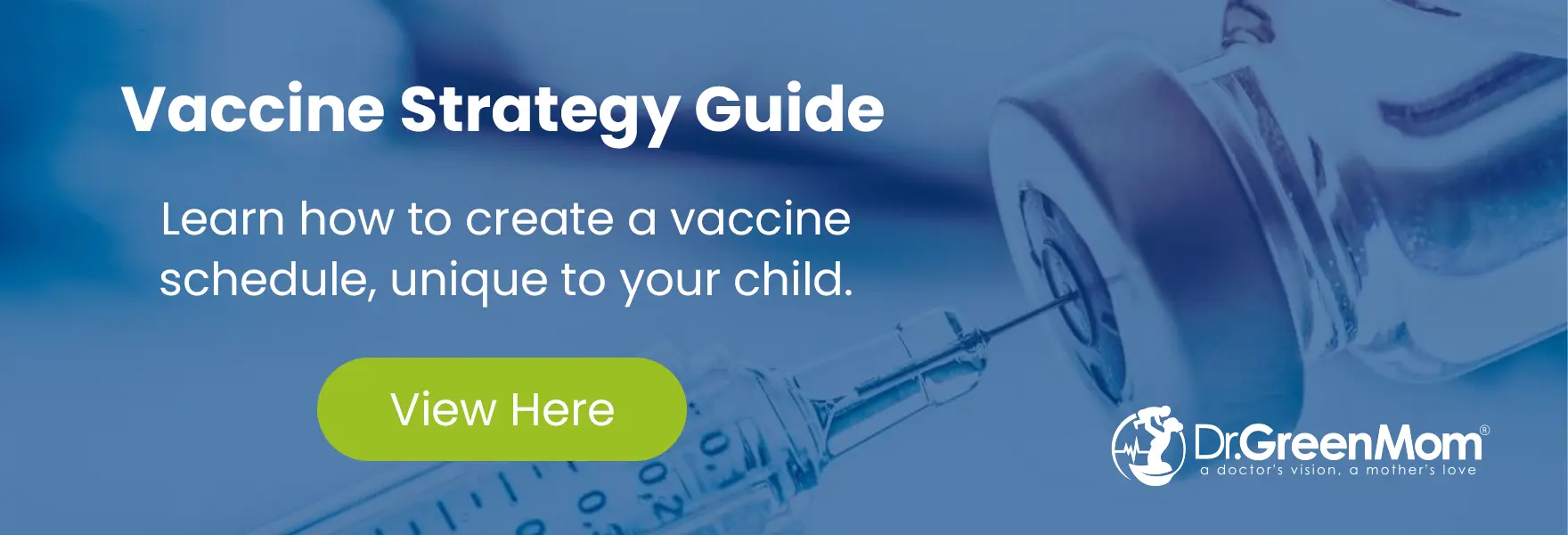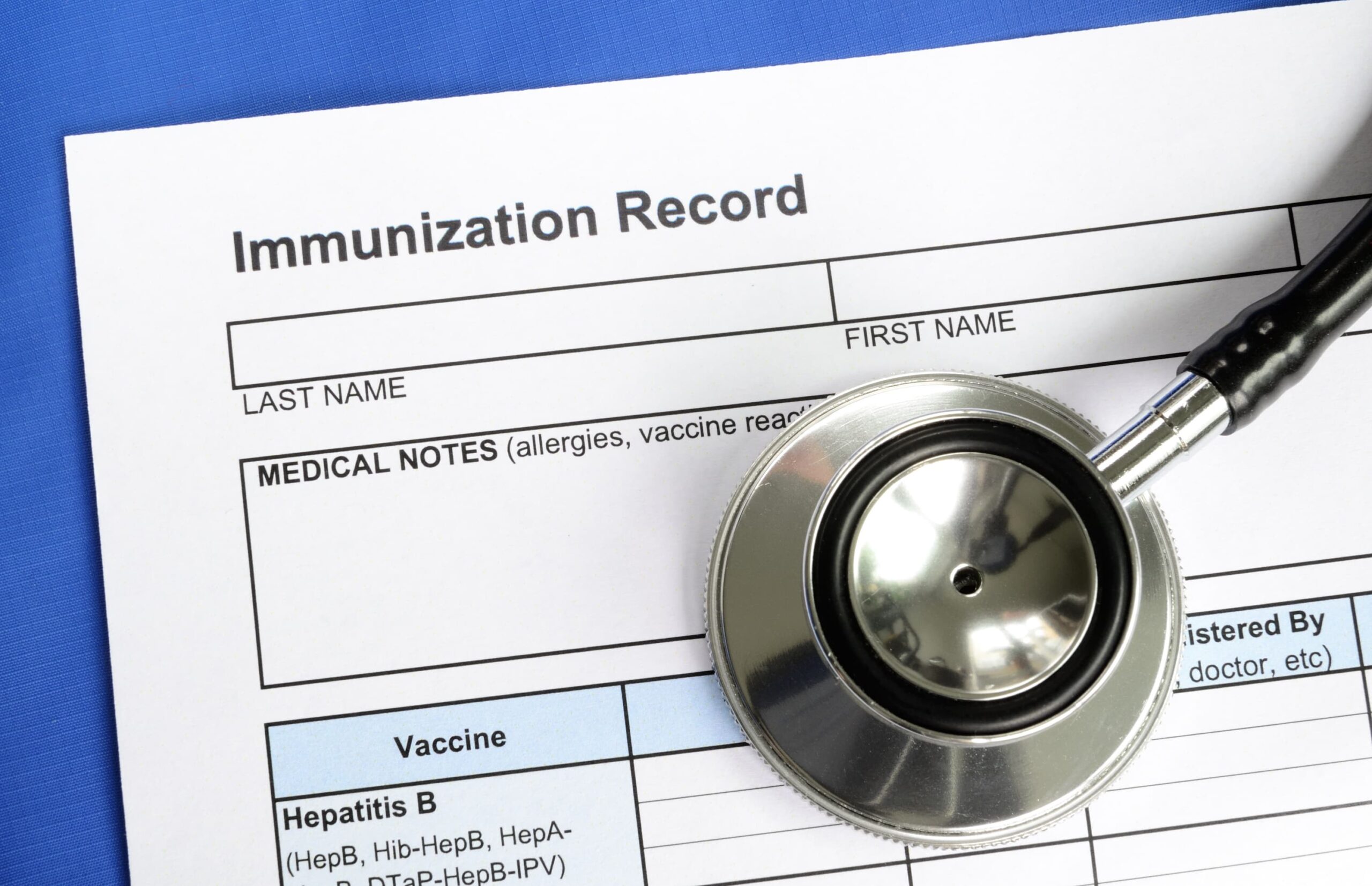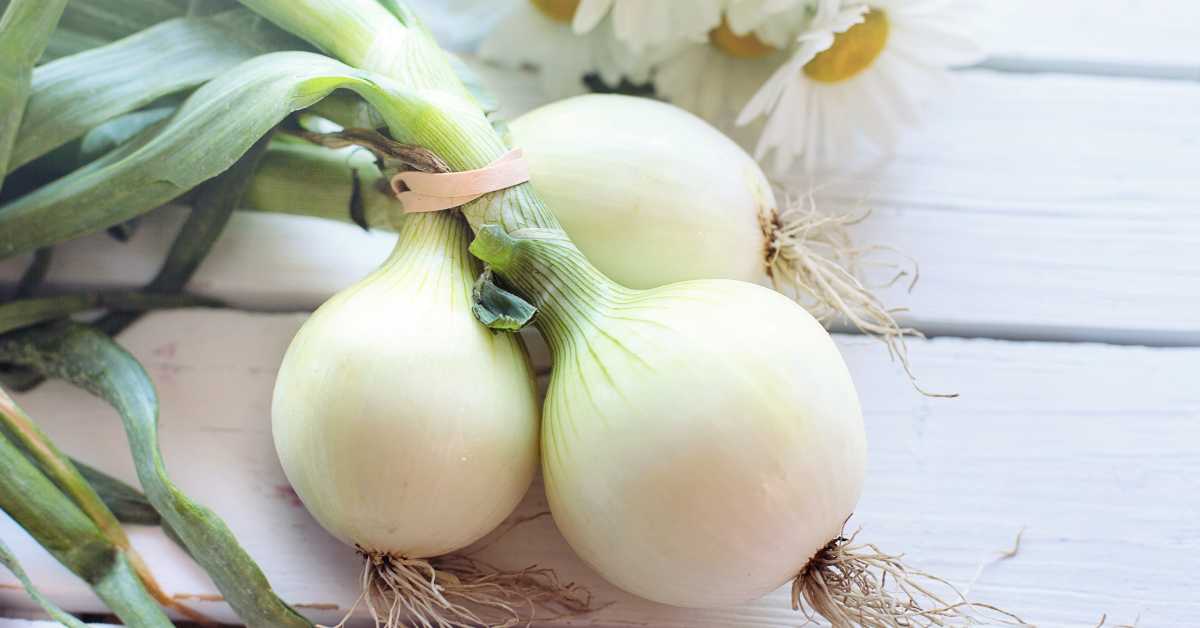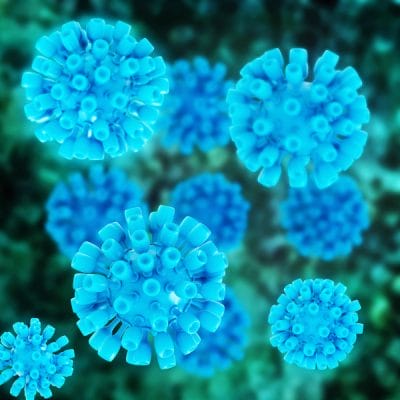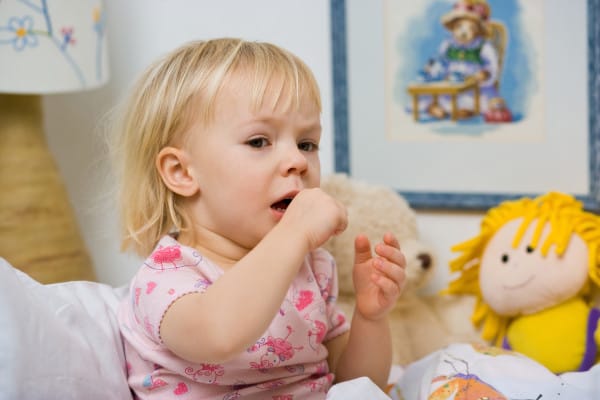- What is Hib?
- Hib Symptoms
- Conventional Treatment for Hib
- When is the Hib Vaccine Given
- Duration of Protection
- Ingredients in the Hib Vaccine
- FDA Hib Vaccine Package Inserts
- Hib Vaccine Reactions
- The Bottom Line and the Hib Vaccine
- Who Should Not Get the Hib Vaccine
- References
- Resources
What is Hib?
Hib disease is a contagious condition caused by the bacteria Haemophilus influenzae type B. It is spread through contact with mucus or droplets from the nose or throat, as when people cough, kiss, sneeze, or share personal items like drinking cups and toothbrushes. The infection is carried by nose and throat excretions into the bloodstream and then settles into various parts of the body, often the spinal fluid and the brain.
Hib Symptoms
Hib is transmitted like the common cold and starts with similar symptoms.
Mild Symptoms
- fever can develop
- doctor will likely treat this with antibiotics: ear or sinus infection, bronchitis, or suspected pneumonia
- child will recover without parents or doctor knowing that the cause of illness was Hib.
Moderate Symptoms
- all of the above mild symptoms
- lethargy
- an ill appearance
- possibly labored breathing that should prompt chest X-ray and blood testing for infection
- oral antibiotics (or perhaps an intramuscular injection) to treat suspected internal bacterial infection
- if blood result reveals Hib bacteria, the child will be admitted to the hospital for several days of IV antibiotics
- child will be ill but probably recover completely
Severe Symptoms (invasive Hib disease)
- symptoms of meningitis, pneumonia, arthritis, cellulitis, or epiglottitis
- hospitalization with aggressive antibiotic treatment and possible respiratory support
- most respond gradually and recover fully (may spend days to weeks in the hospital)
- complications of Hib meningitis, such as hearing loss , learning problems, or nerve injury, occur in about 25 percent of children with invasive Hib
- The case-fatality rate of invasive Hib disease is 2%–5%, despite appropriate antimicrobial therapy.
Conventional Treatment for Hib
- Antibiotics (third-generation cephalosporin (cefotaxime or ceftriaxone), or chloramphenicol in combination with ampicillin)
- Ampicillin resistant strains of Hib are becoming more common in the United States [1]
When is the Hib Vaccine Given?
The Hib vaccine is given at two months, four months, six months, and fifteen months of age.
- The longer you wait to vaccinate your child from Hib, the less number of doses are needed.
- If breastfeeding your infant, chances are very likely that your child has maternal antibody immunity until 6 months of age (see CDC note below the chart).
- If you choose to vaccinate, you may skip the first few doses of Hib vaccine.
Important to Note From the CDC [1]:
The most striking feature of Hib disease is age-dependent susceptibility. Hib disease is not common beyond 5 years of age. Passive protection of some infants is provided by transplacentally acquired maternal IgG antibodies and breastfeeding during the first 6 months of life. In the prevaccine era peak attack rates occurred at 6–7 months of age, declining thereafter. The presumed reason for this age distribution is the acquisition of immunity to Hib with increasing age.
Translation: If breastfeeding your infant, she has maternal IgG antibodies against Hib for the first 6 months of life. Hib is not common beyond 5 years of age, the reason is this: most children came into contact with Hib by this age, giving them lifetime natural immunity (pre-vaccine era).
- For more information: CDC/Alternative Vaccine Schedules
How Long Does Hib Vaccine Protection Last?
- The majority of older children are immune to Hib, probably from asymptomatic infection as infants. [1]
- Nascimento-Carvalho CM, de Andrade AL. Haemophilus influenzae type b vaccination: long-term protection. J Pediatr (Rio J). 2006 Jul;82(3 Suppl):S109-14:
Introduction of the Hib conjugate vaccine produced great decline in the incidence of invasive Hib disease in childhood in countries where this vaccine was introduced into the routine immunization schedule. Nevertheless, the resurgence of invasive Hib disease in some regions has challenged several researchers to identify the reasons for this epidemiological pattern, as well as the measures to be implemented in order to avoid such a phenomenon.
Ingredients in the Hib Vaccine
The ActHIB brand
- Hib sugar/ tetanus toxoid complex
- Sucrose sugar
- Saline solution (salt water)
- Formaldehyde— > 0.5 micrograms
The PedVaxHIB brand
- Hib sugar/ Neisseria protein complex
- Saline solution
- Aluminum —225 micrograms
The Hiberix brand
- Hib sugar/ tetanus toxoid complex
- Lactose sugar
- Saline solution
- Formaldehyde— > 0.5 micrograms
If you would like specific information regarding each ingredient, including studies:
FDA Hib Vaccine Package Inserts
- Pentacel FDA Package Insert (Sanofi Pasteur)- Hib, DTaP, and polio combo
- Hiberix FDA Package Insert (GlaxoSmithKline)- Hib and tetanus combo
- ActHIB FDA Package Insert (Sanofi Pasteur, SA)- Hib and tetanus combo
- PedvaxHIB FDA Package Insert (Merck)- Hib and meningococcal combo
- MENHIBRIX FDA Package Insert (GlaxoSmithKline)- Hib, meningococcal, and tetanus combo
Hib Vaccine Reactions
According to the CDC, moderate or severe reactions to Hib vaccine should be reported to and checked by a doctor immediately. If any of these reactions were to occur they would happen within a few minutes to a few hours after receiving the shot. All adverse reactions should also be reported to the Vaccine Adverse Events Reporting System (VAERS).
Signs to look for include:
- High fever
- Behavior changes
- Difficulty breathing
- Hoarseness or wheezing
- Weakness
- Fast heartbeat
- Dizziness
- Hives
- Paleness
The Bottom Line and the Hib Vaccine
- According to Ronald Kennedy, Ph.D., professor of microbiology and immunology at the University of Oklahoma Health Sciences Center, the combination vaccine of Hib, hepatitis B, and DTP may render the hepatitis B vaccine INACTIVE.
- If you plan to vaccinate, separate out the vaccines and give on different days.
- If you are nursing your infant, chances are good that she has antibodies against Hib infection until at least 6 months of age. If you are concerned, you may test antibody titres to Hib or give dose of Hib at 7 and/or 15 months of age (if you’d like to reduce number of doses).
- There is an association between the Hib vaccine and insulin-dependent diabetes. [12]
References:
Epidemiology and Prevention of Vaccine-Preventable Diseases, 12th Edition (The Pink Book) (CDC) (PDF Version) (Web Version)
What Your Doctor May Not Tell You About(TM) Children’s Vaccinations
The Vaccine Book: Making the Right Decision for Your Child (Sears Parenting Library)
Make an Informed Vaccine Decision for the Health of Your Child: A Parent’s Guide to Childhood Shots
How to Raise A Healthy Child in Spite of Your Doctor
Vaccine Ingredient Summary (CDC)
Federal Vaccine Compensation Statistics (US Department of Health and Human Services)
Association between type 1 diabetes and Hib vaccine
Resources
- Immunization Action Coalition – Hib Vaccine Information Statement
- World Health Organization (WHO) Hib Disease and Vaccine information
- CDC Hib VIS
- Vaccine Book List (with approximately 100 resource books)
- www.askdrsears.com
- World Health Organization (WHO)
- Center for Disease Control (CDC)
- www.drtenpenny.com
- Vaccination Information Network
- www.vactruth.com
Reviewed/Updated: 07/19
Content Created: 06/14
